Fortinet FCP_FGT_AD-7.4 FCP - FortiGate 7.4 Administrator Exam Practice Test
FCP - FortiGate 7.4 Administrator Questions and Answers
What are two features of FortiGate FSSO agentless polling mode? (Choose two.)
A network administrator has enabled full SSL inspection and web filtering on FortiGate. When visiting any HTTPS websites, the browser reports certificate warning errors. When visiting HTTP websites, the browser does not report errors.
What is the reason for the certificate warning errors?
Which three statements about SD-WAN zones are true? (Choose three.)
An administrator has configured the following settings:

What are the two results of this configuration? (Choose two.)
Refer to the exhibits.
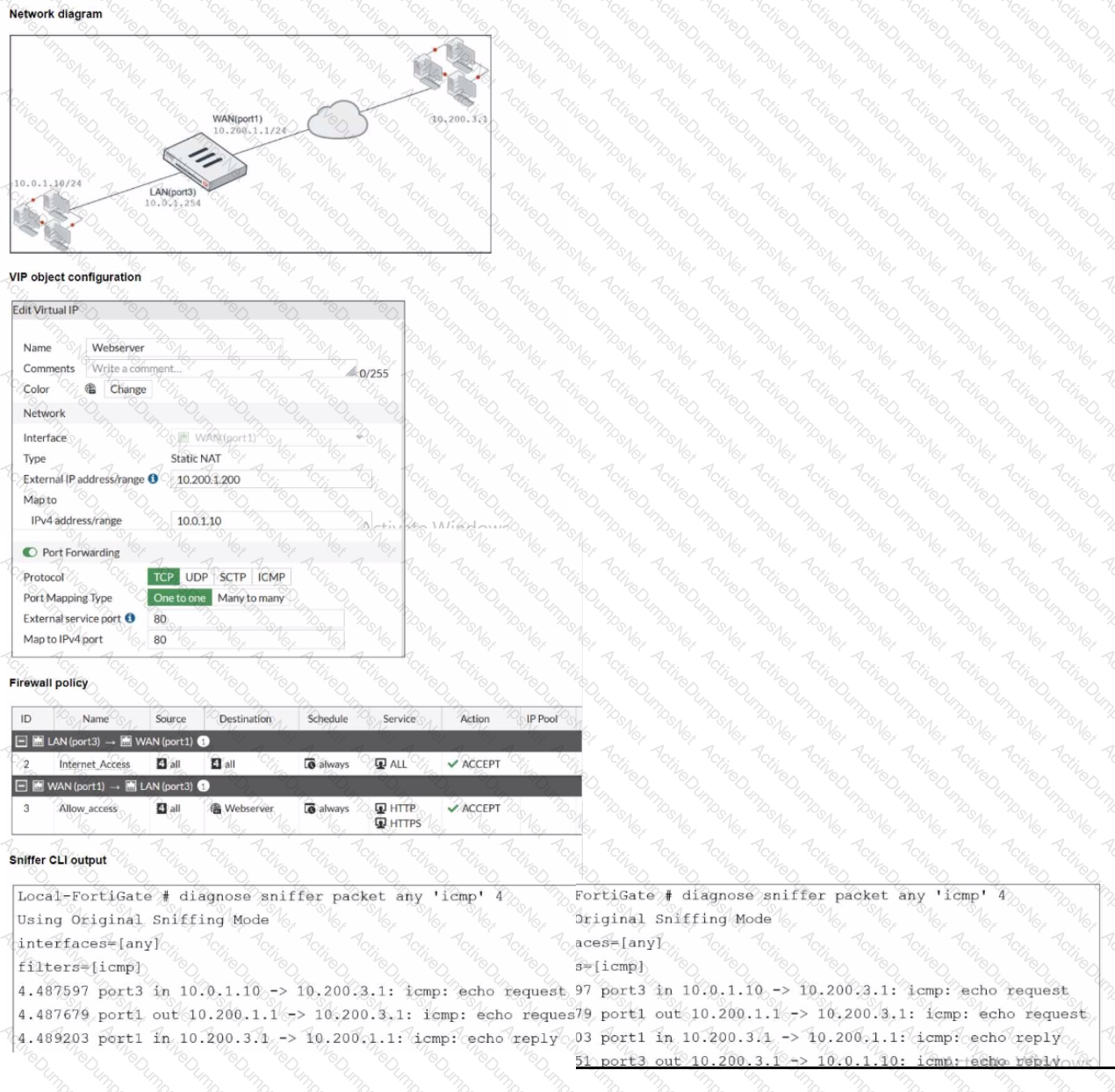
The exhibits show a diagram of a FortiGate device connected to the network, VIP configuration, firewall policy. and the sniffer CLI output on the FortiGate device.
The WAN (port1) interface has the IP address 10.200.1.1 /24.
The LAN (port3) interface has the IP address 10.0.1.254/24.
The webserver host (10. 0.1. 10) must use its VIP external IP address as the source NAT (SNAT) when It pings remote server (10.200.3.1).
Which two statements are valid to achieve this goal? (Choose two.)
Refer to the exhibits, which show the firewall policy and the security profile for Facebook.
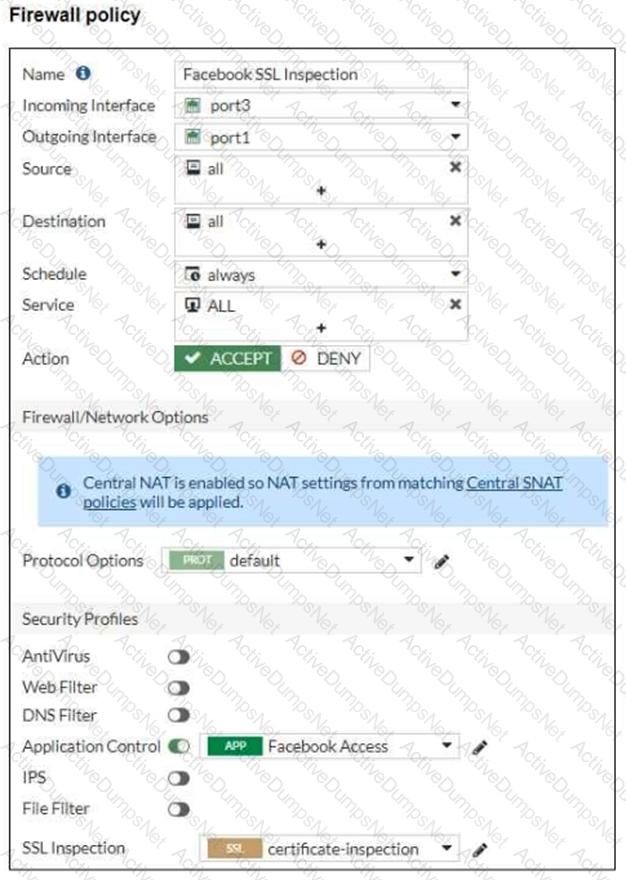
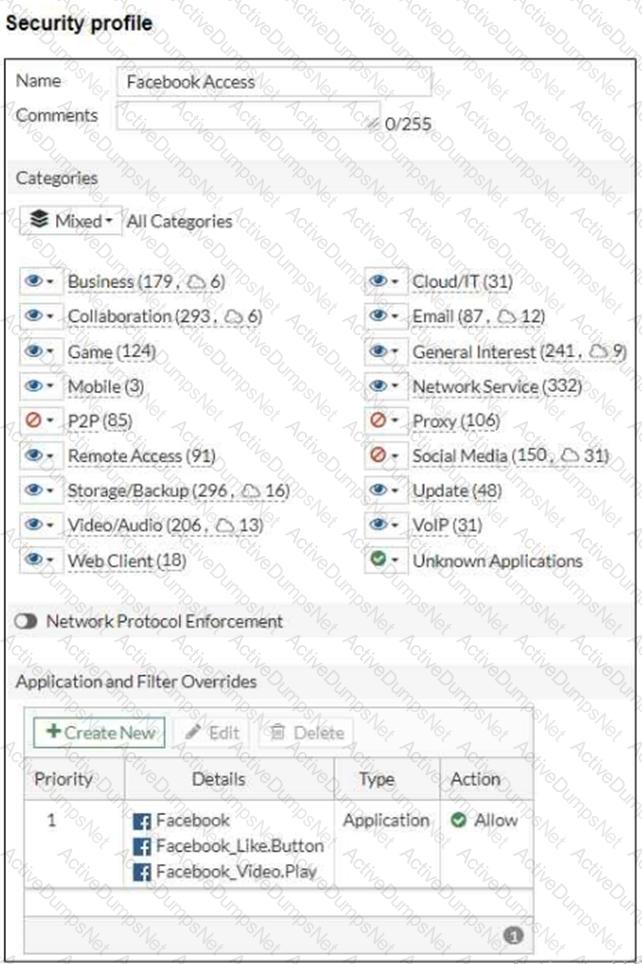
Users are given access to the Facebook web application. They can play video content hosted on Facebook but they are unable to leave reactions on videos or other types of posts.
Which part of the configuration must you change to resolve the issue?
Refer to the exhibits.


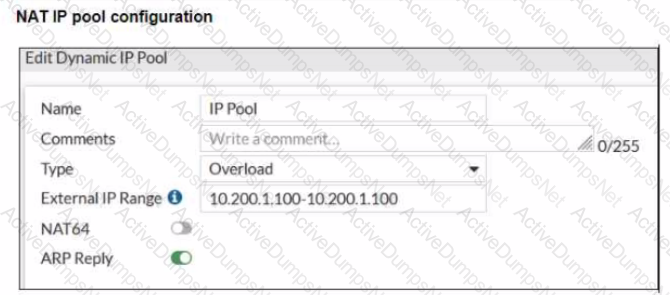
The exhibits show a diagram of a FortiGate device connected to the network, and the firewall policies configuration VIP configuration and IP pool configuration on the FortiGate device
The WAN (port1) interface has the IP address 10.200. l. 1/24 The LAN (port3) interface has the IP address 10.0.1.254/24
The first firewall policy has NAT enabled using the IP pool The second firewall policy is configured with a VIP as the destination address.
Which IP address will be used to source NAT (SNAT) the internet traffic coming from a workstation with the IP address 10.0.1.10?
Which method allows management access to the FortiGate CLI without network connectivity?
Which two pieces of information are synchronized between FortiGate HA members? (Choose two.)
Refer to the exhibit.
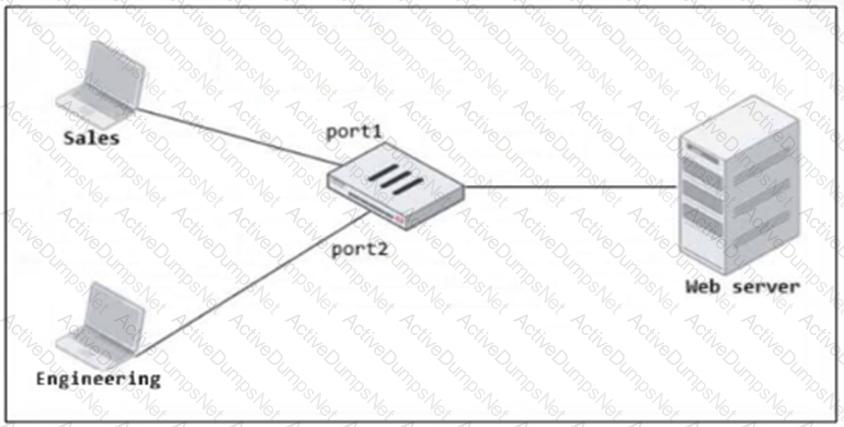
FortiGate has two separate firewall policies for Sales and Engineering to access the same web server with the same security profiles.
Which action must the administrator perform to consolidate the two policies into one?
Refer to the exhibit.
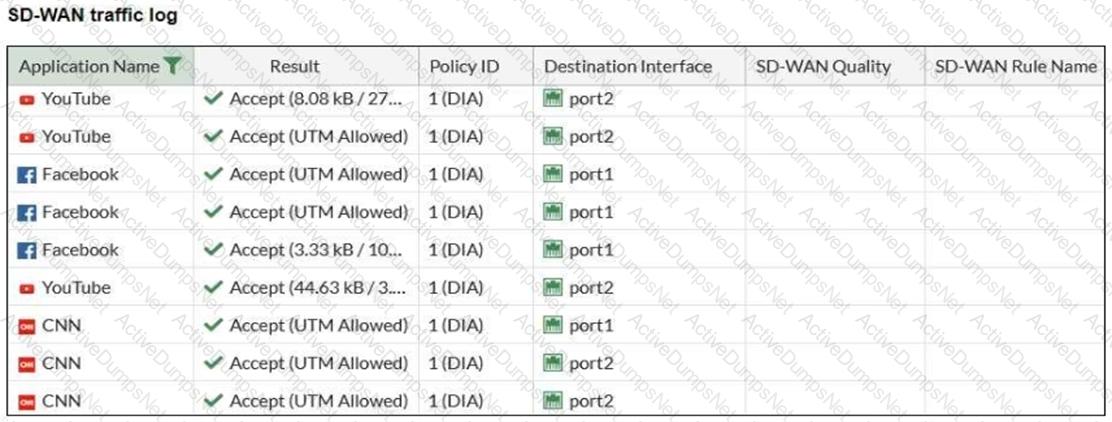
The administrator configured SD-WAN rules and set the FortiGate traffic log page to display SD-WAN-specific columns: SD-WAN Quality and SD-WAN Rule Name.
FortiGate allows the traffic according to policy ID 1. This is the policy that allows SD-WAN traffic.
Despite these settings the traffic logs do not show the name of the SD-WAN rule used to steer those traffic flows.
What can be the reason?
Which two statements describe how the RPF check is used? (Choose two.)
When FortiGate performs SSL/SSH full inspection, you can decide how it should react when it detects an invalid certificate.
Which three actions are valid actions that FortiGate can perform when it detects an invalid certificate? (Choose three.)
Refer to the exhibits, which show a diagram of a FortiGate device connected to the network. VIP object configuration, and the firewall policy configuration.
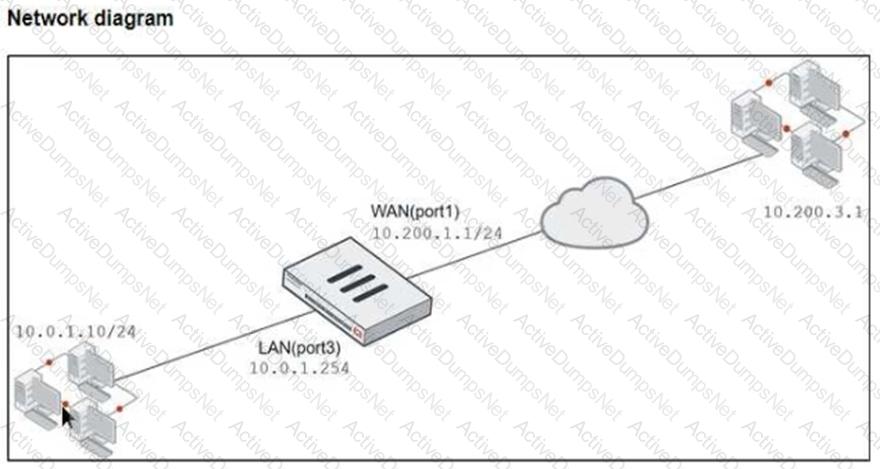
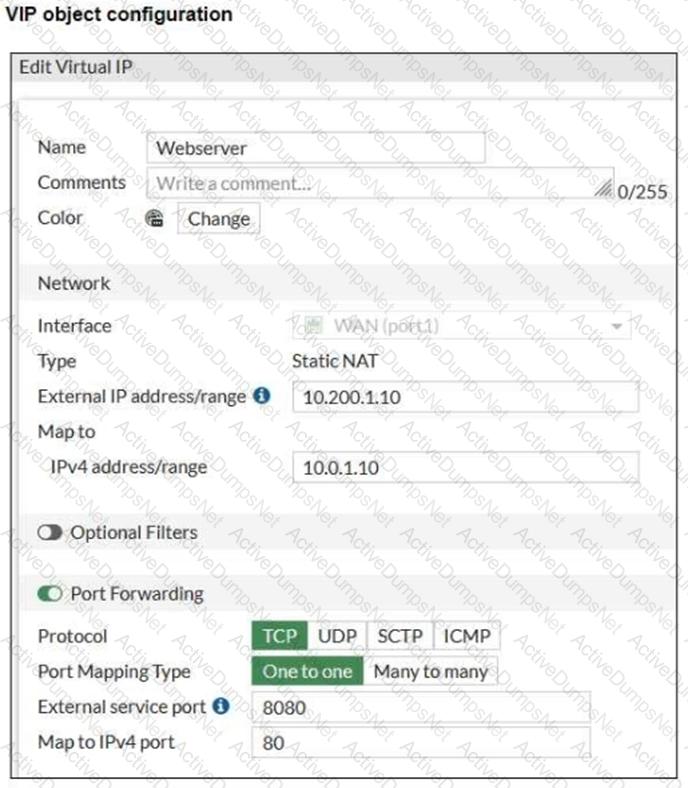

The WAN (port1) interface has the IP address 10.200.1.1/24. The LAN (port3) interface has the IP address 10.0.1.254/24.
If the host 10.200.3.1 sends a TCP SYN packet on port 8080 to 10.200.1.10, what will the source address, destination address, and destination port of the packet be at the time FortiGate forwards the packet to the destination?
Refer to the exhibits.

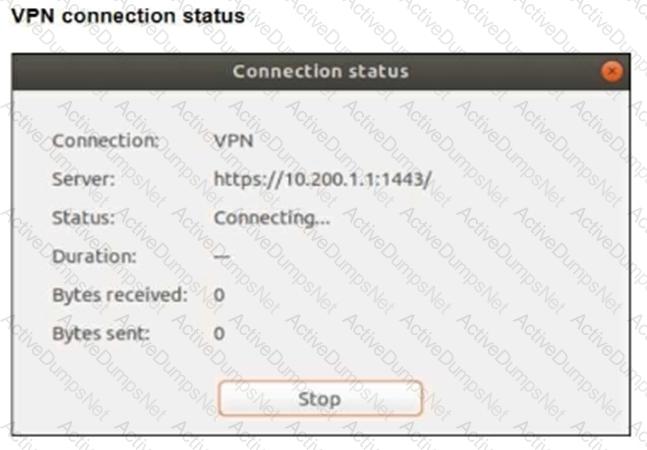
The SSL VPN connection fails when a user attempts to connect to it.
What should the user do to successfully connect to the SSL VPN?
Refer to the exhibit.

Which statement about this firewall policy list is true?
Which statement is a characteristic of automation stitches?
A network administrator is configuring an IPsec VPN tunnel for a sales employee travelling abroad.
Which IPsec Wizard template must the administrator apply?
Which three CLI commands, can you use to troubleshoot Layer 3 issues if the issue is in neither the physical layer nor the link layer? (Choose three.)
A FortiGate firewall policy is configured with active authentication however, the user cannot authenticate when accessing a website.
Which protocol must FortiGate allow even though the user cannot authenticate?
Refer to the exhibit, which shows a partial configuration from the remote authentication server.

Why does the FortiGate administrator need this configuration?
Refer to the exhibits.



The exhibits show a diagram of a FortiGate device connected to the network, and the firewall configuration.
An administrator created a Deny policy with default settings to deny Webserver access for Remote-User2.
The policy should work such that Remote-User1 must be able to access the Webserver while preventing Remote-User2 from accessing the Webserver.
Which two configuration changes can the administrator make to the policy to deny Webserver access for Remote-User2? (Choose two.)
An administrator is configuring an IPsec VPN between site A and site В. The Remote Gateway setting in both sites has been configured as Static IP Address.
For site A, the local quick mode selector is 192.168.1.0/24 and the remote quick mode selector is 192.168.2.0/24.
Which subnet must the administrator configure for the local quick mode selector for site B?
An administrator manages a FortiGate model that supports NTurbo.
How does NTurbo enhance performance for flow-based inspection?
Refer to the exhibit.

FortiGate is configured for firewall authentication. When attempting to access an external website, the user is not presented with a login prompt.
What is the most likely reason for this situation?
Refer to the exhibit.
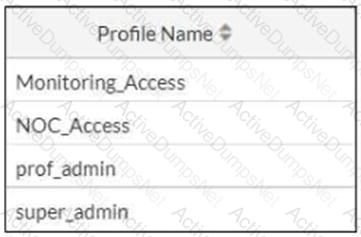
The NOC team connects to the FortiGate GUI with the NOC_Access admin profile. They request that their GUI sessions do not disconnect too early during inactivity.
What must the administrator configure to answer this specific request from the NOC team?
